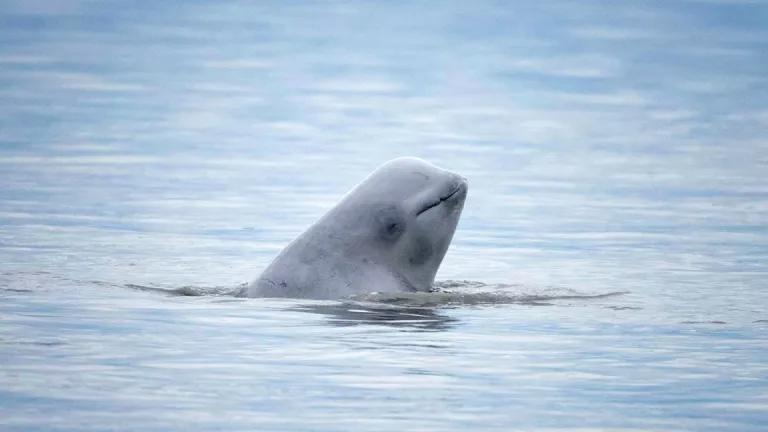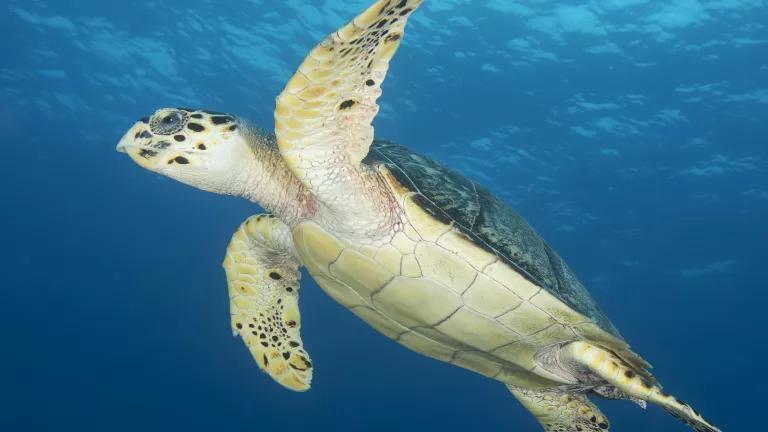Last week marked a major milestone for improving and maintaining the health of our Mid-Atlantic ocean. Just before the unofficial launch of summer with Memorial Day weekend, the Mid-Atlantic Regional Planning Body – made up of the states of New York, New Jersey, Delaware, Pennsylvania, Maryland and Virginia, representatives from federal agencies with ocean responsibilities, the Shinnecock Indian Nation and the Mid-Atlantic Fishery Management Council – met in Baltimore to approve a final ocean planning framework that formalizes the region’s goals and objectives for our shared ocean future.
The framework contains a vision statement, goals and objectives and will guide all upcoming planning work. It is one of the first concrete steps forward in this new process to develop a plan for protection of our Mid-Atlantic ocean waters and for their sustainable use.
Coordinated ocean planning is not unlike identifying where certain activities should happen in your home. For example, cooking dinner makes more sense in your kitchen, since that’s where there’s an oven. Similarly, there are places in the ocean where marine mammal migration or important fish habitat occur and where industry like offshore wind has prioritized development, based on the location’s characteristics, such as substrate and wind speed.
Ocean planning helps ensure we can continue to enjoy the ocean and the jobs and resources it provides for summers to come. We are at a unique historical juncture where planning now will determine how well our already stressed ocean continues to function and provide for us as increased shipping, offshore wind, sand mining and other uses escalate. If we fail to plan, we are essentially planning to fail.
The framework, revised after a series of listening sessions in the region’s coastal states, has as one of its primary goals promoting ocean ecosystem health in the Mid-Atlantic. It also notes the importance of sustaining non-consumptive uses like surfing, birding, whale watching and diving.
The framework commits the regional planning body members to develop a regional ocean action plan based on the framework’s goals, a critical improvement over the original draft framework. A regional ocean action plan should take into account all of the best available information we have on current and future offshore activities (e.g., fishing, boating, shipping), what the impacts of these various actions are on each other (e.g., how renewable wind development can be done in a way that helps protect endangered North Atlantic right whales) and suggest an optimal “floor plan” for the region’s development to maximize the benefits of where and when things occur. It’s a plan for how things can work together and protect the health of the ecosystem that calls out actions each of the participating agencies will take – using their existing authorities – to help ensure this.
One key component to this work is identifying a network of areas important for spawning, breeding, feeding and migrating ocean fish and wildlife to ensure that the ecosystems continue to function and are resilient in the face of new challenges like ocean acidification and climate change. Currently, despite the extent of ecologically and economically valuable offshore habitat within the region, there are virtually no habitat areas designated for year-round protection. The regional planning body has the opportunity to help protect places that are critical to ecosystem functioning and to maintain biodiversity.
The planning body is now moving ahead to develop a draft workplan that will identify actions and timelines to advance the framework; beginning development of a regional ocean assessment to give us a baseline of the system’s health and use; and continuing to flesh out ways for stakeholders, including scientists and the public, to engage in this new stewardship approach to ocean management. You can email comments on the draft stakeholder engagement strategy to MidAtlanticRPB@boem.gov through July 15.
Those of us who use and love the ocean – fishermen, environmental organizations, shipping companies, coastal tourism businesses and members of the public – need to encourage this coordinated ocean planning and continue to engage in development of this new plan.



